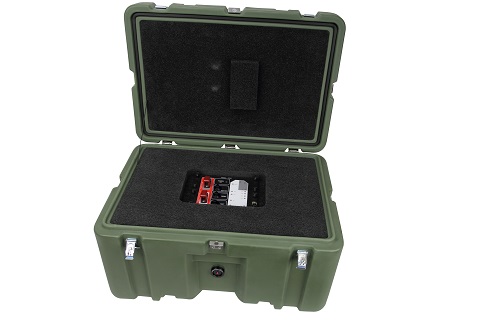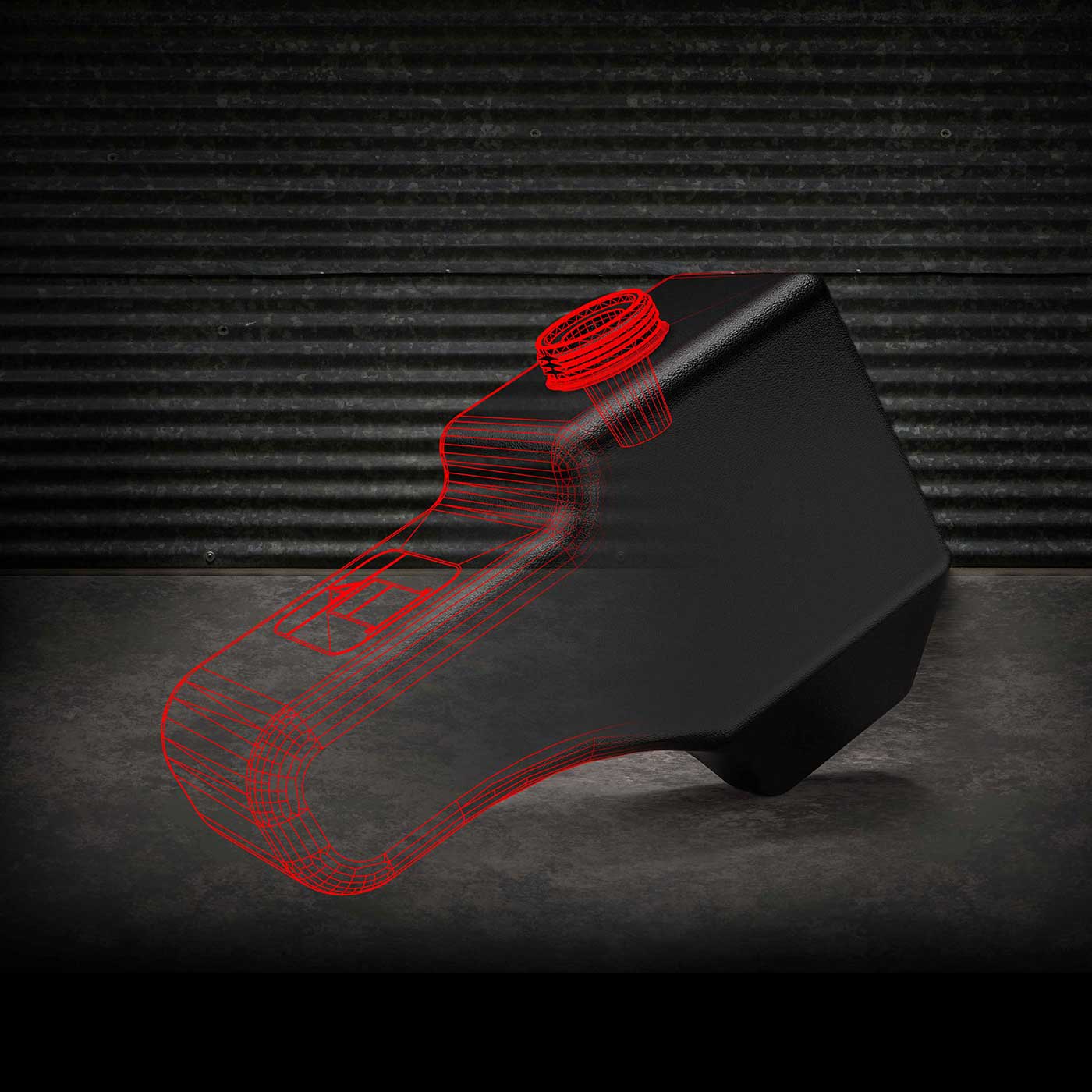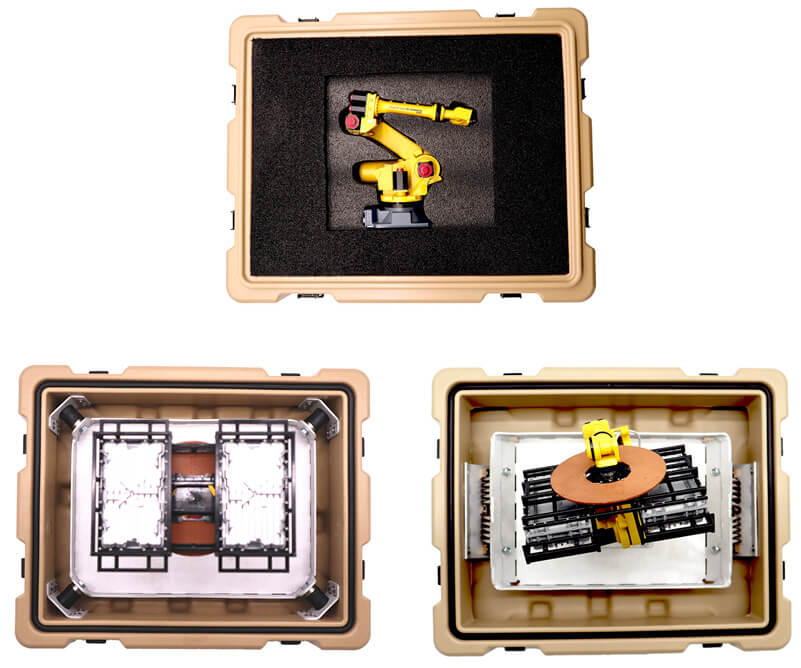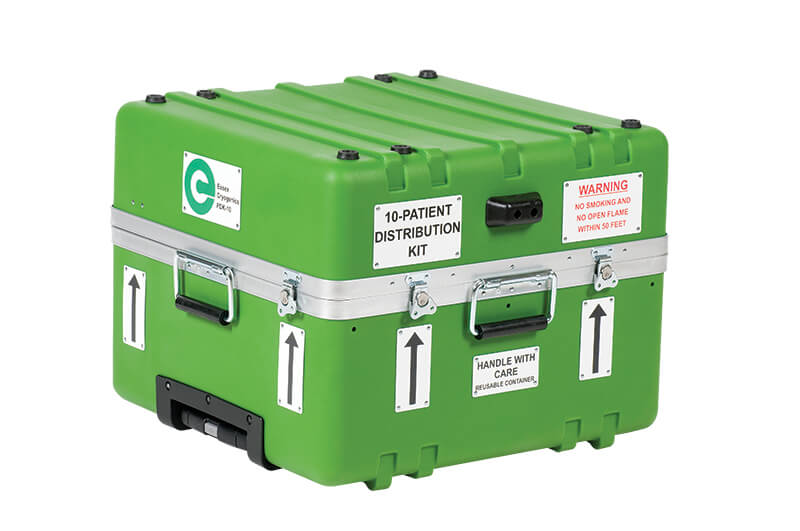
Foam Cushioning: What You Need to Know for Packaging Optimal Design
The main goal of any packaging solution is to protect the contents. When using a hard plastic case, part of the packaging equation is covered. A plastic case manufactured to industry standards, such as ATA 300 for durability or IP for water and dust protection, can be trusted to protect against the environment and repeated abuse. The next part of the equation is what to use inside the case. Foam cushioning is the most common solution and can be quite effective and cost effective when used properly. This Technical Brief covers how to calculate the right foam and thickness by considering three important factors of your parts – fragility, weight, and size – so that you can have confidence in a final product that will equal exactly what’s needed for your packaging project.
Fragility Factor
One key factor to determine is the fragility of the case contents. This can be defined in terms of g limit. The g force of an object is a measurement of acceleration due to gravity, and it expresses the point at which damage can occur. More robust items can survive higher g levels before they are damaged, while more delicate items will be damaged at lower levels. Determining the exact g limit of an item is an iterative and detailed process. Step velocity and step acceleration tests are conducted, in which various levels of both are subjected to an object until damage occurs. An item must be destroyed to find out its exact g limit. This is not always feasible during product development due to timelines and costs. More times than not, the exact fragility is not known. In these instances you can use g ranges established for similar types of products.
Extremely Fragile | 15-25 G’s
Special military applications, precision aligned test instruments
Very Delicate | 25-40 G’s
Mechanically shock mounted instruments and electronic equipment (shock mounts should be firmly secured prior to packaging and are provided for in-service protection only)
Delicate | 40-60 G’s
Aircraft accessories, computer equipment and other electronics
Moderately Delicate | 60-85 G’s
Video equipment, computer monitors
Moderately Rugged | 85-115 G’s
Equipment with minimal electronic controls
Rugged | 115 G’s and up
Machinery
Size and Weight Factor
The size and weight of the part are the next two factors to consider. First, the weight of the parts will help determine how the package will be handled in distribution. The heavier the package the less likely it will be subjected to higher drops. Accordingly, size and weights are used by industry standards, such as ASTM 4169 and ATA 300, to determine the height and frequency of drops to be used for validation testing.
| GROSS WEIGHT IN POUNDS | TYPE OF HANDLING | DROP HEIGHT IN INCHES |
|---|---|---|
| 0-20 | 1 person throwing | 42 |
| 21-50 | 1 person carrying | 36 |
| 51-250 | 2 persons carrying | 30 |
| 251-500 | light equipment handling | 24 |
| 501-1000 | light equipment handling | 18 |
| 1001-up | heavy equipment handling | 12 |
Second, weight and size are used to calculate PSI or static stress, a factor which will help select the type of foam to use. This is determined by taking an item’s weight, in lbs., divided by the square inches of each side of the item. Understanding the PSI of each side of the part will also assist in how to position the items in a foam set. In general, it is best to try to hold the parts on their largest and flattest sides to minimize the static stress. You don’t want all the weight of the part to be distributed on its smallest side during a drop. Typically, a package will ship on its largest, flattest side during normal handling.
Foam Factor
Once the fragility, drop heights based on weight, and PSI are established, the foam type, density, and thickness can be determined. To start, PSI is used to determine your foam density. Three common foam types are as follows:
• 0.1-0.3 PSI – 2 lb./ft3 polyurethane
• 0.4-0.6 PSI – 4 lb./ft3 polyurethane
• 0.7-1.0 PSI – 2 lb./ft3 polyethylene
Each foam type and density has its own cushioning curve which is used to illustrate optimum performance based upon g limit, weight, and drop heights. These curves will help establish the foam thickness you need. It might be tempting to go with maximum foam density and thickness in order to provide the highest level of protection. However, this can actually be detrimental. The higher the density and the thicker the foam, the higher the cost, an additional expense that’s unnecessary if the part does not need that much protection. In addition, very light and delicate items can actually be damaged if the foam is too thick and too dense. It is best to follow the cushioning curves for optimum protection.




The best validation of any foam set is to subject it loaded with the contents to industry packaging performance standards. Gemstar has in-house testing equipment to validate your custom case solution. Our testing capabilities include:
• Vibration: Loose load vibration, repetitive shock and bounce tests according to ASTM D4169, MILSTD-810, ATA300, FedEx, ISTA 1A, FED-STD-101 and multiple other industry standards evaluate the structural integrity of cases and the ability of the packaging to protect the contents from vibration.
• Drop: Drop tests according to ASTM D4169, MILSTD-810, ATA300, FedEx, ISTA 1A, FED-STD-101 and multiple other industry standards simulate impacts that may occur during transit



